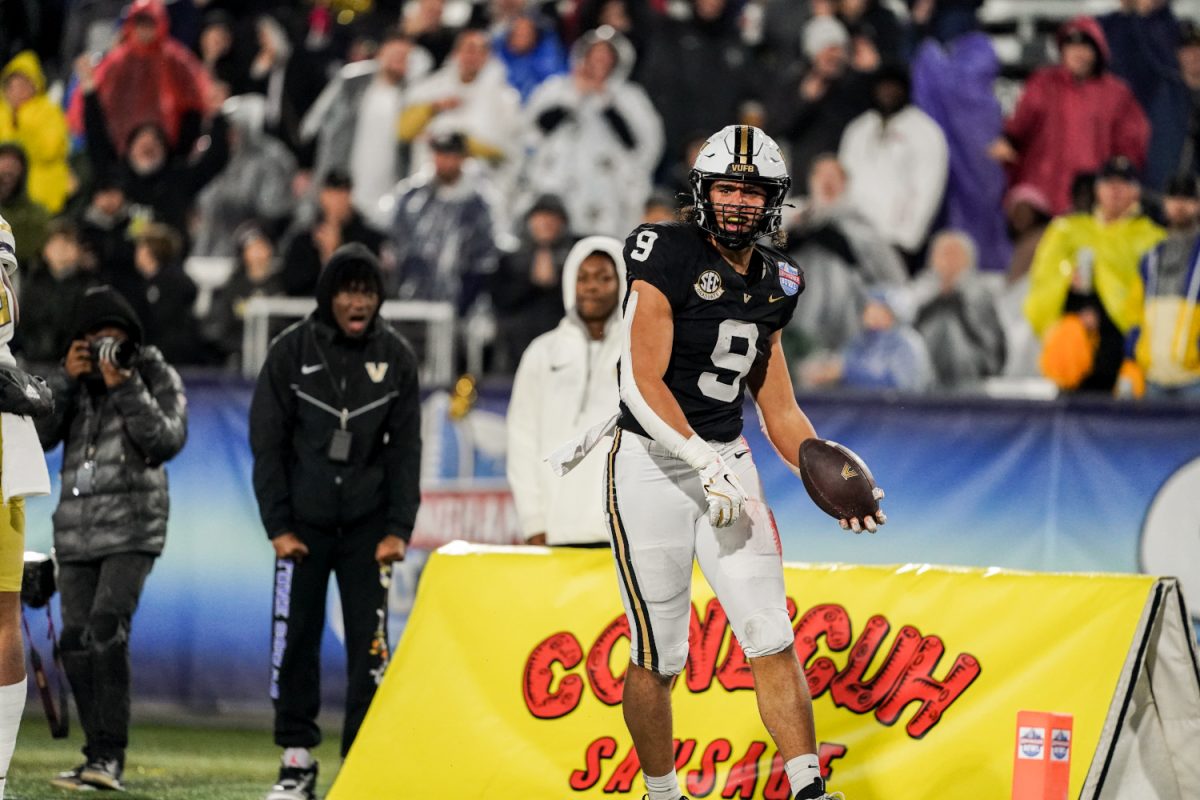Vanderbilt Football is now in year four of the Clark Lea era, and the start of the 2024 season is inarguably the most exciting to date. With a 34-27 overtime victory against Virginia Tech, the Commodores managed to pull off the largest upset in the country by Vegas point spread (-13.5 at most books). According to ESPN, Vanderbilt also broke a 61-game streak of losing when trailing by seven-plus points in the fourth quarter.
This isn’t the only Lea season to start with a bang: Vanderbilt has won three out of four opening games under the current coaching regime. None were as big as the win over the Hokies, but all are important to the story of how Vanderbilt Football got to the present. In this edition of Data ‘Dores, we peel back the curtain on the stats behind all four of Vanderbilt’s season openers in the Lea era — from the loss to East Tennessee State University to the victory over Virginia Tech.
The Comparison
The four season openers of the Lea tenure are notable for how distinct each one is. Way back in 2021, the Commodores opened with a 23-3 loss against ETSU, the only opening game loss under Lea. In 2022, Vanderbilt went on the road to Honolulu and thrashed Hawaii, 63-10. A year later, the Commodores hosted the Rainbow Warriors and eked out a 35-28 win in a portend of a rocky season to come. This season, the Black and Gold took home the biggest win of them all with a 34-27 defeat of Virginia Tech — a far cry from the result of Lea’s inaugural game.
In a basic statistical comparison, the 2024 season opener isn’t all that different from past editions. The Commodores scored 34 points (compared to an average of 33.75 in the last four years) and finished with 371 yards versus an average of 397.5. Looking deeper, what really stood out this year was how those yards were achieved: an almost completely balanced mix of rushing and passing.
Against the Hokies, Vanderbilt earned 190 passing yards and 181 rushing yards for a near-even production ratio (not to say anything about the efficiency of those two strategies). In past seasons, the Commodores struggled mightily to assemble such a well-balanced attack. In 2021 and 2023, Vanderbilt leaned overwhelmingly on the pass in its two most disappointing openers of the Lea tenure. In 2022’s demolition of the Rainbow Warriors, the Commodores rushed for 404 yards while only throwing for 135 — a long way off from a balanced approach.
On the defensive side, the Commodores weren’t any better than in years past. They allowed 27 points versus an average of 22 in the last four openers — albeit against a much better team — and 397 yards against an average of 365. The Hokies did most of their damage in the passing game, putting up 322 yards on 34 attempts for an average of 9.5 yards per attempt. The Commodores did quite well in shutting down the ground game, as Virginia Tech managed a mere 75 yards on 30 rushing attempts — the second-lowest yard total and efficiency allowed by Vanderbilt in the last four season openers.
The Difference
If the Commodores didn’t perform all that differently on offense or defense than in past openers, how did they pull off an overtime upset against a better opponent than in years past? The answer, as always, is in the data: red zone efficiency.
Vanderbilt made it to the vaunted red zone five times, scoring touchdowns on four attempts and a field goal on the other. Virginia Tech, on the other hand, got to the red zone four times, scoring a touchdown only once and netting a field goal on two other occasions.
Had Virginia Tech converted either of their two red zone field goals into touchdowns, the game would have ended in regulation with a victory for the squad from Blacksburg.
On Virginia Tech’s third possession of the game, it marched to the Vanderbilt 19-yard line before a holding penalty dragged it back to the 29. The Commodores then allowed only six yards through the air on three pass attempts, forcing a field goal that cut the score to 17-3.
On Virginia Tech’s third possession of the second half, the Hokies made it to the Vanderbilt 13 before the Commodores’ defense kicked into high gear and forced a stop. A pass for no gain, an incomplete pass and a sack were the result of Virginia Tech’s next three plays, and the ensuing field goal cut the Vanderbilt lead to seven, as opposed to three.
Vanderbilt’s ability to bend — but not break — at the end of the field allowed them to win the game in overtime. Diego Pavia took that opportunity and ran with it (literally), rushing four yards for the would-be game-winning score. We’ll have more on Pavia and the Commodores in future editions of Data ‘Dores; but, until then, remember: good teams win, but great teams cover.














